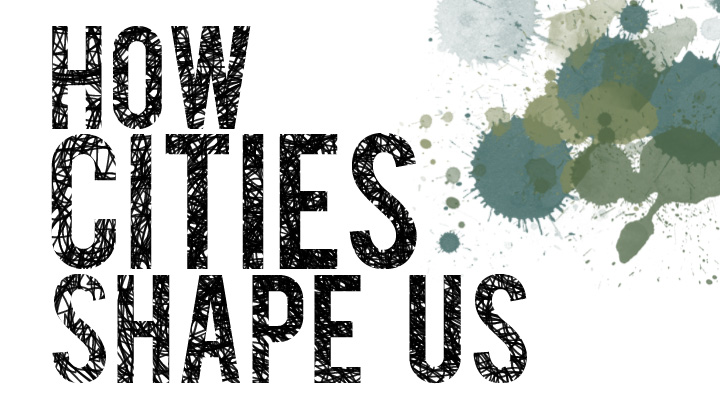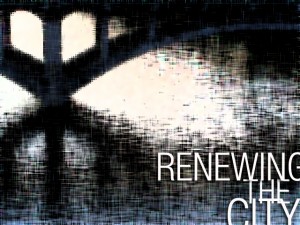The spiritual has been banished from the city commons, certainly the Gospel of Jesus. It’s not appropriate to talk about Gospel, especially with strangers or acquaintances in the city. It wasn’t always this way.
The Importance of Sacred Space in the City
As it turns out, the spiritual was critical to urban flourishing throughout history. Joel Kotkin points out that the cities have flourished the most are the sacred, safe, and busy. For centuries religious structures have been prominent in cities—temples, churches, cathedrals, mosques, pyramids. In the ancient city of Ur, in Mesopotamia, it was the priestly class that created a critical sense of order and continuity in the city. Very often the temple was the center of city life. Now why was this important? The sacred space in cities provided moral and social order, an agreed upon set of mores that promoted the general welfare of the city. Kotkin goes so far as to say that “Without the notion of sacred space, it is doubtful cities could have ever developed anywhere in the world.†(9)
Without the notion of sacred space, it is doubtful cities could have ever developed anywhere in the world.
 Removing the Sacred from the City
Removing the Sacred from the City
After the collapse of the Roman Empire, it was the Christian clergy that revitalized the city in Europe. They preserved language through translating the Scriptures, promoted education, and advocated a sense of authority often absent from the post-Roman era. However, when the sacred was removed from cities they declined. In the industrial era, crime and slum housing abounded especially in cities like Berlin, Leningrad, Moscow. Cities devoid of sacred space became rampant with crime and poor living conditions. There was no moral restraint but that of the state. The state was not enough. In his concluding remarks after a sweeping analysis of the history of global cities, Kotkin writes: “Cities can thrive only by occupying a sacred place that both orders and inspires the complex natures of gathered masses of people.†(160) History shows we need spirituality to order socially dense cities.
What makes Christianity so unique? Christians, in particular, have a history of building renewing cities. This is part of sociologist Rodney Stark’s thesis in Cities of God. He points out that when cities were ravaged by plagues, poor sanitation, and crime, it was the early Christians that stayed behind to tend to the sick, the poor, the orphans, and slaves. He says that Christians created a “miniature welfare state†within the city. A “city within the city” if you will. What about the modern era of New Urbanism? In modern cities we find that the sacred role is now often ignored. Kotkin says of new urban planners: “they rarely refer to the need for a powerful moral vision to hold cities together.†(158) This does not bode well for the welfare of the city.
The Church as the Sacred City to Come
Secularism has displaced the sacred space so crucial to cities. The skyscraper has replaced the temple. The new religion of urbanization is wealth, status, and quality of life, all of which are often driven by greed. The spirituality of the city is secularist consumerism. With increased quality of life comes a higher price of life. Low-income housing is hard to find. Minorities, students, and artists scramble to pay rent and live in the city. Many cities are experiencing a massive reordering of social life in our city. A deepening fissure between the haves and the havenots due to a misuse of money and power. An inordinate desire for more hurts others. It would appear that there is a need for more than a simple social reordering. Secular space has not sufficiently replaced sacred space. In fact, it has arguably made it worse. The city needs an alternative spirituality, a “sacred space†that is powerful, potent enough to reorder the spirituality of the city.
The Gospel of the kingdom promises this alternative. It is the good news that Jesus Christ came to inaugurate a kingdom that will eventually right all wrongs, reorder the disorder, and secure an eternal city that is sacred, safe, and busy. The end of history is a city. In Revelation 21, that city is also depicted as a temple illuminated by the light of the glory of God in Christ. As Andy Melvin sings, “The sun and moon will be replaced by the light in Jesus eyes.” According to Malachi 3, for some that light is a burning oven, consuming the unjust and the wicked to establish justice on the earth. For others that light is the sun of righteousness with healing in its wings. The same flame that burns is the same flame that heals. Is the church reflecting or obscuring the light of the Lamb?
Through the light of the knowledge of the glory of God, Jesus is building that city that is to come. He is constructing a city of light–the Church–that is to be a foreshadow of the city to come, a people so renewed by the gospel that they renew their cities. Are you foreshadowing well or poorly? Revelation 21 shows us that the city that is to come is not a sacred space in the city; it takes up the whole world. It is not one sacred space in the bustling urban environment. restraining moral disorder and social ill. The whole world is now a sacred space, a holy city, teeming with life, justice and happiness, where people ultimately live for God not self, ordered around Jesus not a self-made spirituality.
As Kotkin avers, there is need for sacred space in the city. Not a holier-than-thou kind of space but a serving-you-well kind of space, a kind of Christian that makes the best of the sacred and the best of their city.
 Today over half the world’s population lives in cities and half of those cities are Asian. There are over 400 cities with a population of over a million. The future of our world is profoundly urban shaped. As cities have emerged, morphed, and multiplied over the centuries, they have created the contours of civilization. Cities are man-made infrastructures that facilitate the flow of goods and services, exercise government, provide education, produce, and contribute to human flourishing in general.
Today over half the world’s population lives in cities and half of those cities are Asian. There are over 400 cities with a population of over a million. The future of our world is profoundly urban shaped. As cities have emerged, morphed, and multiplied over the centuries, they have created the contours of civilization. Cities are man-made infrastructures that facilitate the flow of goods and services, exercise government, provide education, produce, and contribute to human flourishing in general.

 Removing the Sacred from the City
Removing the Sacred from the City A City Renewing Church
A City Renewing Church